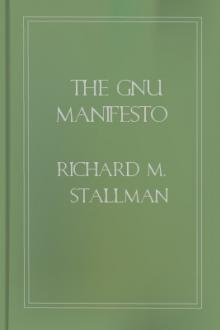Love Story: In The Web of Life Ken Renshaw (the best novels to read TXT) 📖

- Author: Ken Renshaw
Book online «Love Story: In The Web of Life Ken Renshaw (the best novels to read TXT) 📖». Author Ken Renshaw
(d)2=(x)2 +(y)2+(z)2+(vt)2.
Cut to the temple sitting on a giant chariot.Einstein hits the horse on the rump and it charges off. We see aline connecting the door of the temple before it started movingstretching to the corner of the moving temple as it movesaway.
Pythagoras says, "That is interesting, but whowould ever do anything with that?"
Einstein is seen scratching his head as thescene fades.
The commentator then adds:
"That is about how far we can go visualizingspacetime. There was no evolutionary advantage for our species toevolve with the ability to visualize more dimensions than we cansee. Quite a bit after the time of Pythagoras, mathematiciansdecided their equations didn't have to limited by what they couldsee. They can have equations that describe any number of dimensionsand geometries. Einstein's mathematics teacher at his college,Herman Minkowski, liked to play around with a higher number ofdimensions than four. One of his sets of higher dimensions is nowcalled complex eight-dimensional Minkowski space, which we willcall eight-space for short. Mathematicians like to name thingsafter their originators. Pythagoras's theorem is named after Mr.Pythagoras, for instance.
"Like many things in mathematics, the idea ofeight-space lay around unused for years. After the turn of thiscentury, a mathematician found eight-space could be used to explainmany mysteries in physics and expand the field to explain someno-no topics such as ESP. Until this new explanation came along,most physicists would write you off as crank if you even mentionedESP, because there was no scientific explanation for it. Allpsychic phenomena were considered the product of ignorance,superstition, and unscientific thinking. Few credible scientistswould touch the subject for fear of being ostracized by theirpeers.
"Knowledge of eight-space may change the way wethink about many things, so lets explore it further. We have tofirst address the idea of the word 'complex' in eight space, theidea of complex numbers. If you went to k-12 school in the lastdecade, you know all about complex numbers. However, chances areyour parents and surely your grandparents don't know about them In1545 an Italian mathematician, Geroiamo Cardano was trying to solvean equation but nothing worked. Lets let Geroiamoexplain."
Switch to another animation. Our character,Geroiamo, is dressed like the men we see in Shakespearian plays,wearing puffy sleeved shirts, pantaloons, tight pants, pointed toeshoes.
Geroiamo is sitting at a table scribbling awayon equations. He keeps muttering and swearing, wadding up his paperand throwing it on the floor, starting over. His cleaning ladycomes in to clean up and asks him why he is making this mess. Heexplains that he is trying to solve this equation, and he keepsending with an impossible number, the square root of minusone.
The cleaning lady picks up a piece of paper,unwads it and stares at it for a minute. "You mean this numberhere, minus one that looks as though it is under a table orawning?"
"Yes,'" says Geroiamo. "There can be no numberthat, if multiplied by itself, can make a minus one. A minus timesa minus is always a plus."
The cleaning lady looks at the paper and says,"But the number is right here. Why don't you simply call it anumber and stop making such a mess."
We see Geroiamo showing his equations tofriends. They all laugh derisively and ridicule him for only beingable to solve the equation with a fictitious or imaginary numbers.They say, "Who will ever do anything with that?"
The commentator returns and says:
"As Geroiamo found the imaginary numbersconvenient to solve problems, other mathematicians found itconvenient to use them. After a while, certainly by the start ofthe nineteenth century, nobody thought anything bad about usingimaginary numbers. Engineers used them in designing and analyzingbridges.
This brings us to Einstein in the earlytwentieth century:"
In the animation, we see a child Einsteinworking on a formula. Old Pythagoras is looking over his shoulder.He says, "You are only twelve years old, do you think you can provemy theorem in a new way?" Einstein hands Pythagoras the paper andPythagoras reads it a while, and then dances around joyfullysaying,
"He did it! He did it! It has been a thousandyears since anyone did anything original to prove my theorem. Butwho will ever do anything with that?"
The commentator returns and says, "In 1901Einstein submitted his doctoral dissertation, an early paper on histheory of relativity. Here, we see what happened."
A young Einstein, recognizable by his not-yetwild grey hair, walks, in a dejected slumping mode, into a roomwhere there is a professor, identifiable by his academicrobe.
"Why so glum?" asks the professor.
"Professor Minkowski, my doctoral dissertationon the theory of relativity was rejected because it was too farout. Those old fossils want me to write a paper on old stuff thatthey will be comfortable with."
Minkowski says, "I read your paper and thoughtit was quite good. I think you should make time an imaginary number so your theory will fitwith other new stuff going on physics."
Then, we see Geroiamo walk in saying, "Goodsuggestion, imaginary numbers can be used to solve all kinds ofproblems."
Einstein replies, "In all due respect, I don'tlike imaginary numbers. I don't know how to visualize them, andparticularly imaginary time,and that is how I think."
Minkowski adds, "That's one of the differencesbetween working in math and physics. Mathematics doesn't need torelate to anything you can see. Physics, especially among the oldguys on your dissertation committee, has to relate to something youcan measure. Your relativity theory doesn't have any experiments togo with it. Why don't you dust off that old paper you did about thesize of atoms."
Einstein replies, "That paper has a greatamount of measurement data. That should satisfy the oldgoats."
The commentator returns:
"In 1905, Einstein was awarded his doctorate.Around that time, he was working on a paper about mass andenergy:"
We see Einstein in a baggy sweatshirt andtennis shoes with his wild uncombed hair. He is scribbling onpaper, scratching his head, pulling his hair, getting up andwalking around in a circle.
Pythagoras in is toga walks in and asks, "Whatis the problem?"
Einstein says, "I am working on





Comments (0)